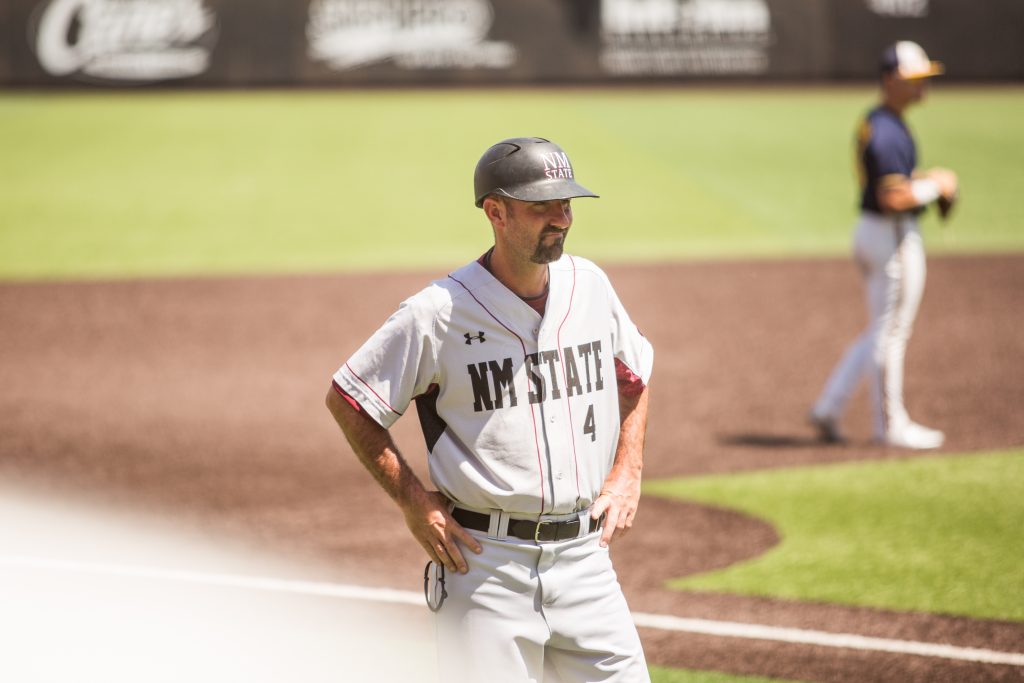 This past season, Terry Davis helped lead the New Mexico State Aggies to its first-ever WAC Tournament title and first NCAA Regional since 2012. His Aggie hitters ranked in the top-25 nationally in multiple categories and his most recent recruiting class ranked in the top-40 in NCAA DI (Collegiate Baseball):
Inside Pitch: As a NCAA Division I recruiting coordinator, how would you rank 60 time, throwing velocity, and hitting exit speed?
Terry Davis:
This past season, Terry Davis helped lead the New Mexico State Aggies to its first-ever WAC Tournament title and first NCAA Regional since 2012. His Aggie hitters ranked in the top-25 nationally in multiple categories and his most recent recruiting class ranked in the top-40 in NCAA DI (Collegiate Baseball):
Inside Pitch: As a NCAA Division I recruiting coordinator, how would you rank 60 time, throwing velocity, and hitting exit speed?
Terry Davis: It’s really difficult to pick one that is more important than the other. I think that it all comes down to what your specific need is and what you are looking for out of a particular position. In general, the fastest guys on most teams are going to play up the middle or in the outfield, so these guys will have faster 60 times than a corner infielder, for example. There are always exceptions, however; it all comes down to what that coach is looking for specifically at that position.
Another measureable that’s value is determined largely by coaches is throwing velocity. In general, the right fielder and the left side of the infield will have the strongest arms on the team because they have to make the longest throws. Again, there are always exceptions- like the right fielder with below average arm strength and an above average hit tool. For the most part, if you are going to play shortstop at the collegiate level, you should have at least average arm strength based on the importance of that position defensively.
Another common measurable – especially at the High School level – is exit velocity. Players are constantly comparing each other to their peers and always striving to have the highest recording in this area. In my opinion, having a high exit velocity doesn’t mean you can hit, but having a low one could mean that you aren’t physically strong enough or lack the hand eye coordination to play at a certain level. Having a high exit velocity does mean that you are strong, it doesn’t mean that you can situationally hit, execute a hit and run, score a runner from third with less than two outs, or consistently put the barrel on the ball.
I don’t personally believe that one tool is more important than the other, but I’m sure there are some coaches that value a certain ability more than others, especially if they’re looking for a specific position. Due to college baseball having more players on their roster than the number of scholarships allotted, each coach will have their own unique way of building their team. At NMSU we really value skill acquisition, and make it a priority to monitor our development in these areas often throughout the course of the year.
IP: What is one must-have for the players that you recruit?
TD: A must have for a recruit for us is someone that we can TRUST. Someone that we can trust to get it done academically; someone that we can trust to show up and work hard every day and be coachable; someone that we can trust to not embarrass or bring any negative attention to the program.
Trust is a very difficult trait to evaluate in the short amount of time we have in the recruiting process. The tough thing is that there is nothing a player or parent can say that is going to make us trust them; they’ll earn or lose the trust of the coaching staff by their actions and that’s it.
The biggest red flag for us in terms or recruiting and trying to accurately evaluate tools, especially in today’s culture, is players that don’t play hard. We simply cannot evaluate someone’s foot speed if they don’t run hard. It happens time and time again. If a teammate, coach or parent tells me that Johnny runs a 6.8 60 and then he gives us a 4.55 home to first time, I’m just going to move on to the next guy. The best advice I can give is to play the game the right way- run everything out!